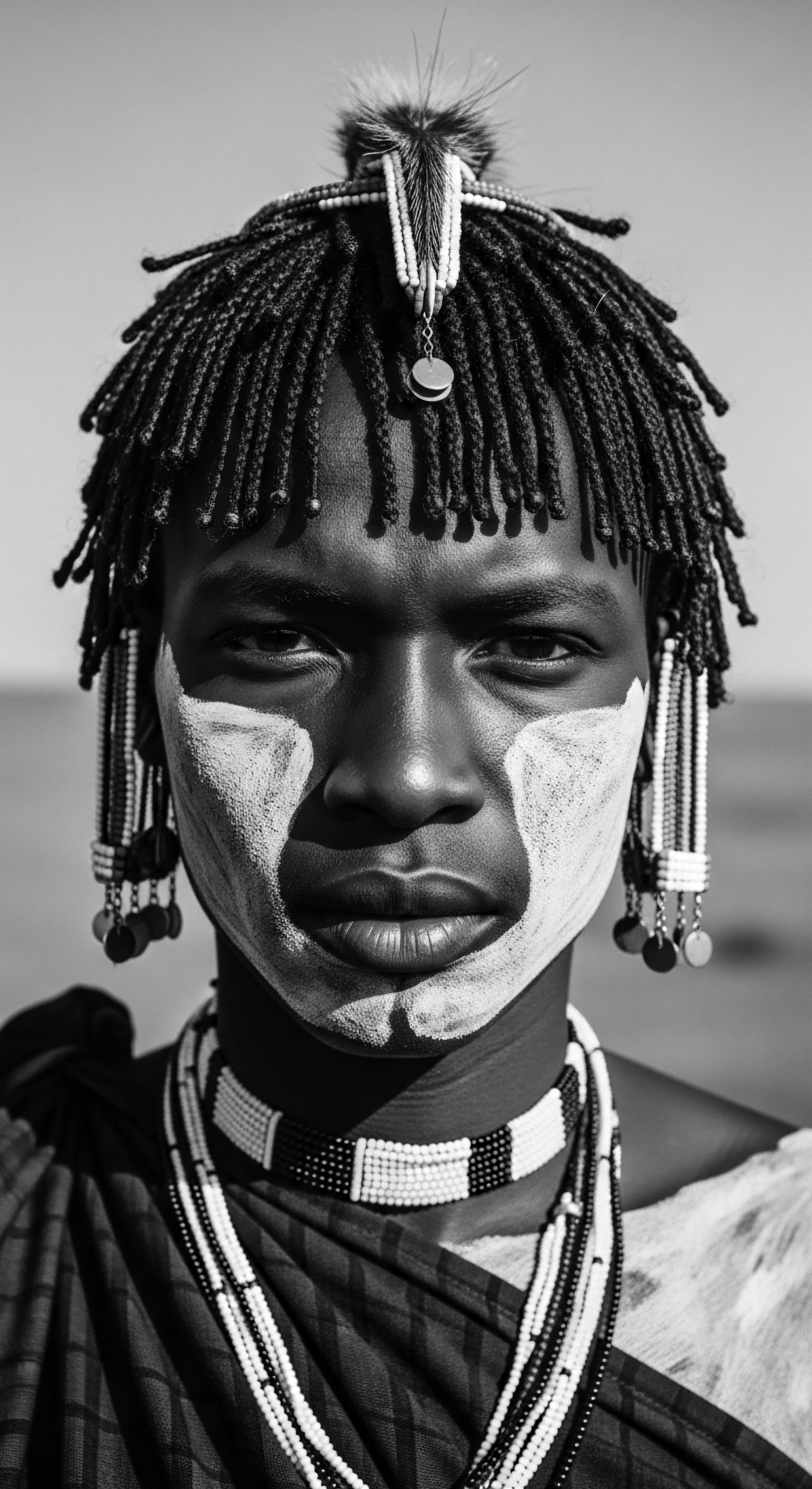
Fundamentals
The concept of Spiritual Adornment, within the vibrant lexicon of Roothea’s ‘living library,’ transcends a simple definition of beautification. It is an understanding that textured hair, particularly within Black and mixed-race communities, serves as a profound conduit for ancestral connection, personal power, and communal identity. This idea suggests that how one cares for, styles, and presents their hair is not merely a matter of aesthetics but a deeply rooted spiritual practice, echoing generations of inherited wisdom and resilience. It acknowledges that hair is an extension of self, a visible manifestation of one’s inner spirit and a link to the collective past.
From the earliest human societies, hair has held a revered place, often considered a direct connection to the divine or a source of spiritual energy. In many African cultures, the head is seen as the body’s highest point, making hair the closest part to the heavens. This perspective positions hair as a medium for communication with ancestral spirits and divine beings. The meticulous care and elaborate styling practices, dating back thousands of years, were not solely for appearance but were rituals steeped in sacred meaning, designed to invite good fortune or to offer protection from malevolent forces.
Spiritual Adornment views textured hair not just as a physical attribute, but as a living legacy, a sacred vessel of identity, and a profound connection to ancestral wisdom.
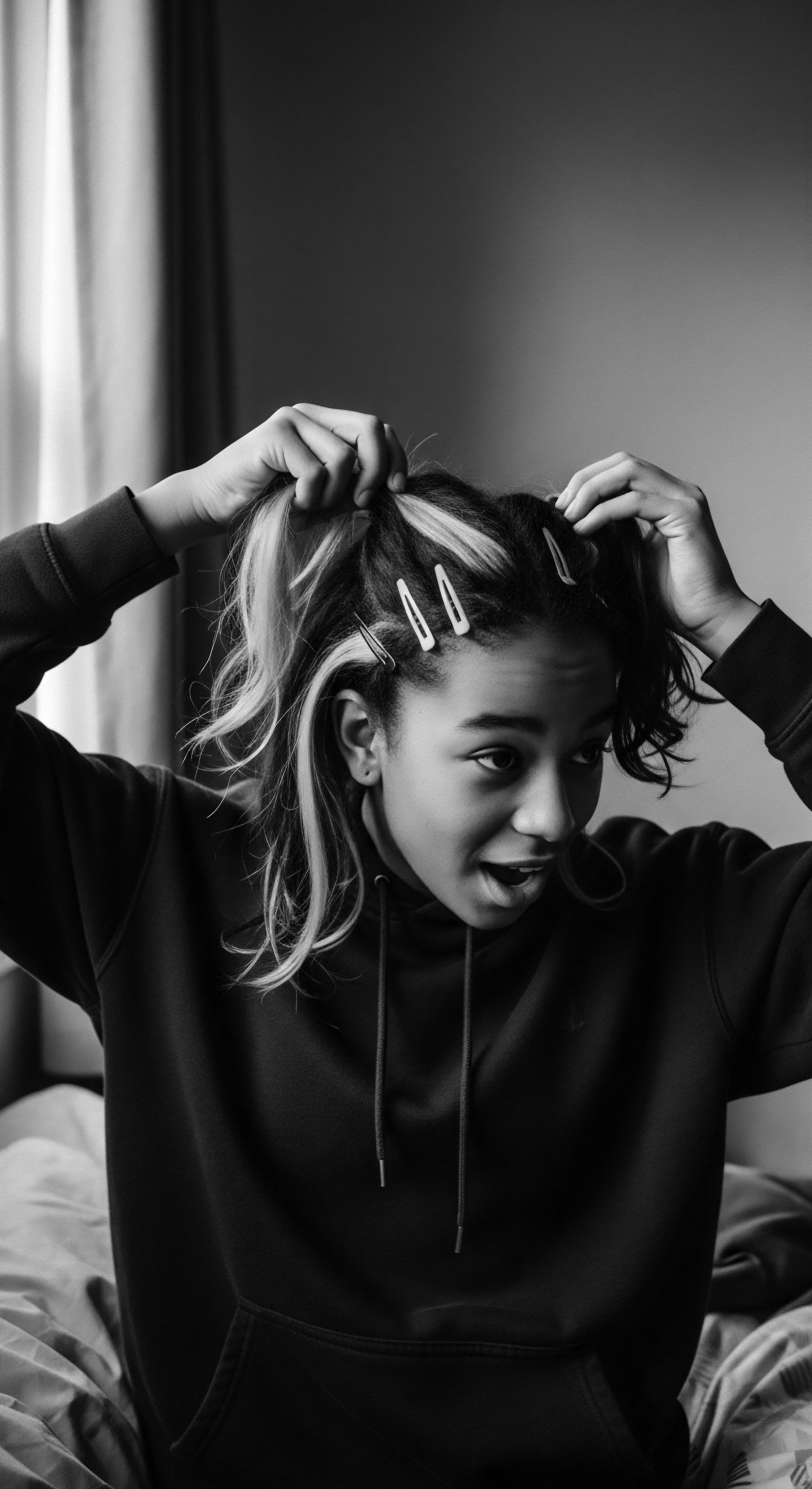
The Roots of Significance
The historical significance of hair in African societies cannot be overstated. It served as a complex visual language, conveying vital information about an individual’s social standing, marital status, age, wealth, and even their tribal affiliation. These intricate styles were often the result of communal gatherings, where knowledge and stories were shared, strengthening bonds between generations.
- Tribal Identity ❉ Specific braiding patterns or adornments often indicated a person’s ethnic group or geographical origin. For example, the Himba women of Southwest Africa traditionally wear their hair in thick braids coated with clay, a distinct marker of their heritage.
- Social Status ❉ The complexity and adornment of hairstyles could denote an individual’s rank or importance within the community, with leaders often sporting the most elaborate styles.
- Life Passages ❉ Hair was frequently styled in particular ways to mark significant life events, such as coming-of-age ceremonies, marriage, or periods of mourning.
The practices surrounding hair were deeply interwoven with daily life and spiritual beliefs. Washing, oiling, braiding, and decorating hair with natural elements like beads, cowrie shells, or herbs were not mere chores; they were ceremonial acts that reinforced cultural continuity and personal connection to the spiritual realm.
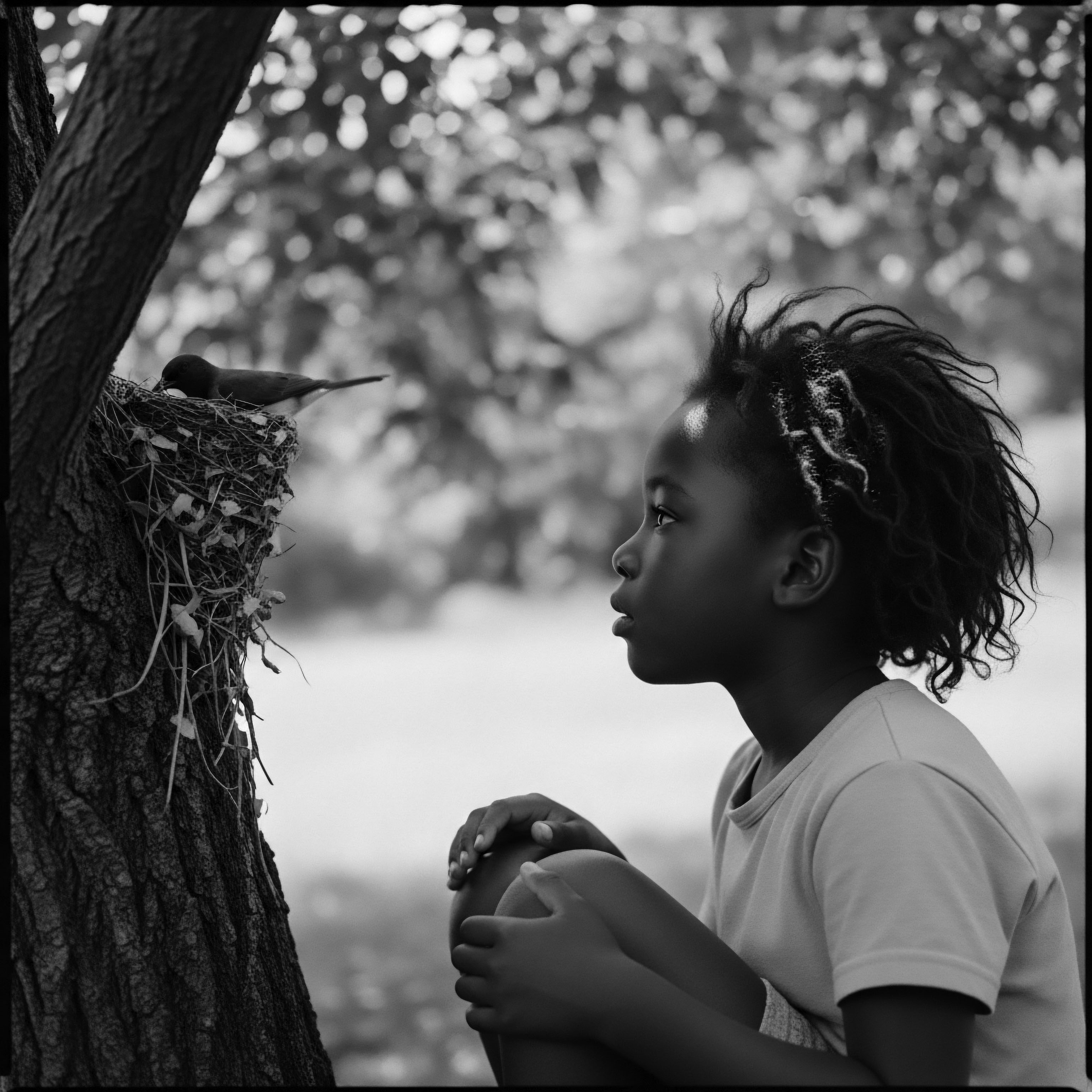
Intermediate
Moving beyond a basic understanding, the Spiritual Adornment reveals itself as a dynamic interplay between elemental biology and ancestral practices, a testament to the profound relationship between textured hair and the spiritual wellbeing of individuals and communities. This deeper meaning acknowledges that the very structure of textured hair, with its unique coils and curves, is not a biological accident but a signature of heritage, inviting a particular kind of care and reverence. The concept is rooted in the belief that the physical act of caring for one’s hair can be a meditative, grounding experience, connecting the individual to a lineage of resilience and self-expression.
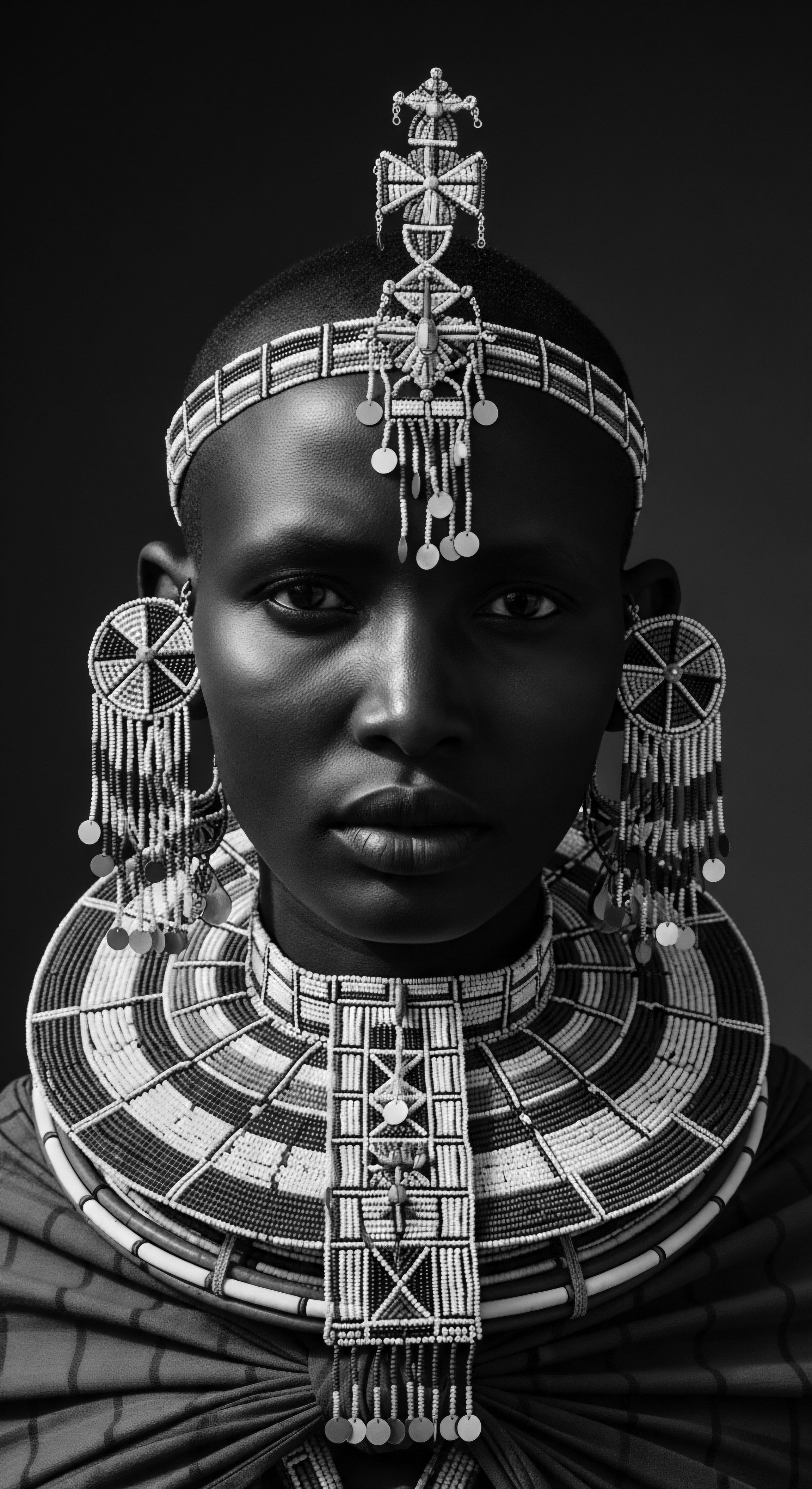
Echoes from the Source ❉ Biology and Ancestral Practices
The elemental biology of textured hair, characterized by its helical structure and diverse curl patterns, is intrinsically linked to its ancestral origins. These unique formations, often misunderstood or devalued in Eurocentric beauty standards, are celebrated within the framework of Spiritual Adornment as a biological inheritance of immense cultural value. Traditional hair care practices, passed down through generations, were developed in harmony with these inherent qualities, utilizing natural ingredients and techniques that nourished and protected the hair, often in harsh climates.
Consider the wisdom embedded in ancient African hair care. Ingredients such as Shea Butter, Coconut Oil, and Aloe Vera were not chosen at random; their properties aligned with the specific needs of textured hair, providing moisture, strength, and scalp health. These remedies, often derived from local flora, highlight an intimate knowledge of the environment and a sustainable approach to self-care that predates modern scientific understanding. The act of preparing these natural ingredients, often a communal endeavor, further deepened the connection to ancestral wisdom and collective wellbeing.
The journey of Spiritual Adornment is a continuous conversation between the innate qualities of textured hair and the nurturing wisdom passed down through generations.
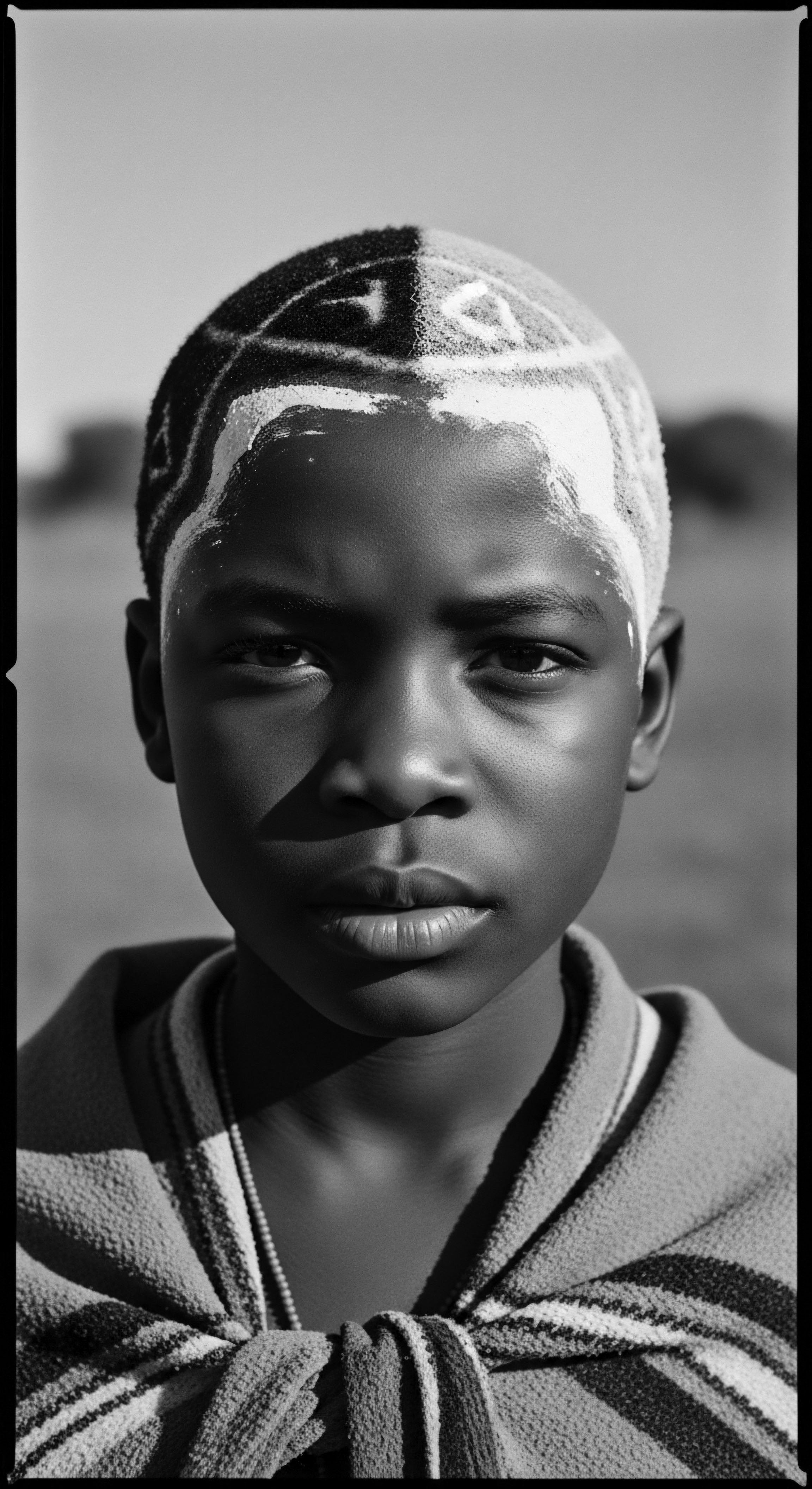
The Tender Thread ❉ Living Traditions of Care and Community
The communal aspect of hair care forms a central pillar of Spiritual Adornment. In many African societies and across the diaspora, hair styling was, and remains, a profoundly social ritual. It is a time for sharing stories, transmitting oral histories, and reinforcing social bonds.
This collective care is not simply about physical grooming; it is a ceremonial act of mutual support and cultural preservation. The salon and barbershop, for instance, have historically served as vital cultural hubs within Black communities, spaces where dialogue, political discourse, and cultural knowledge are exchanged.
The practice of braiding, in particular, exemplifies this communal and symbolic significance. Beyond its aesthetic appeal, braiding served as a means of communication and a quiet act of resistance during periods of oppression. For enslaved Africans, intricate cornrow patterns could conceal messages or even maps for escape routes, with seeds hidden within the braids providing sustenance for perilous journeys. This historical example profoundly illuminates the Spiritual Adornment’s connection to textured hair heritage, Black hair experiences, and ancestral practices, showcasing how hair became a canvas for survival and cultural defiance.
| Traditional Practice Communal Braiding Sessions |
| Heritage Connection / Modern Link A time for intergenerational bonding, storytelling, and the transmission of cultural knowledge, affirming social cohesion. |
| Traditional Practice Use of Natural Oils & Butters |
| Heritage Connection / Modern Link Ancient knowledge of ethnobotany, providing deep moisture and protection for textured hair, now validated by modern hair science. |
| Traditional Practice Symbolic Hair Designs |
| Heritage Connection / Modern Link Patterns that communicated social status, tribal affiliation, or life events, continuing to express identity and cultural pride today. |
| Traditional Practice These enduring practices underscore the profound historical and cultural depth embedded within the Spiritual Adornment of textured hair. |
The very act of styling textured hair, whether through braids, twists, or locs, is a deliberate choice to honor one’s heritage and assert identity in a world that often attempts to erase it. This commitment to traditional styles reflects a conscious decision to connect with ancestral wisdom and to stand in defiance of imposed beauty standards.
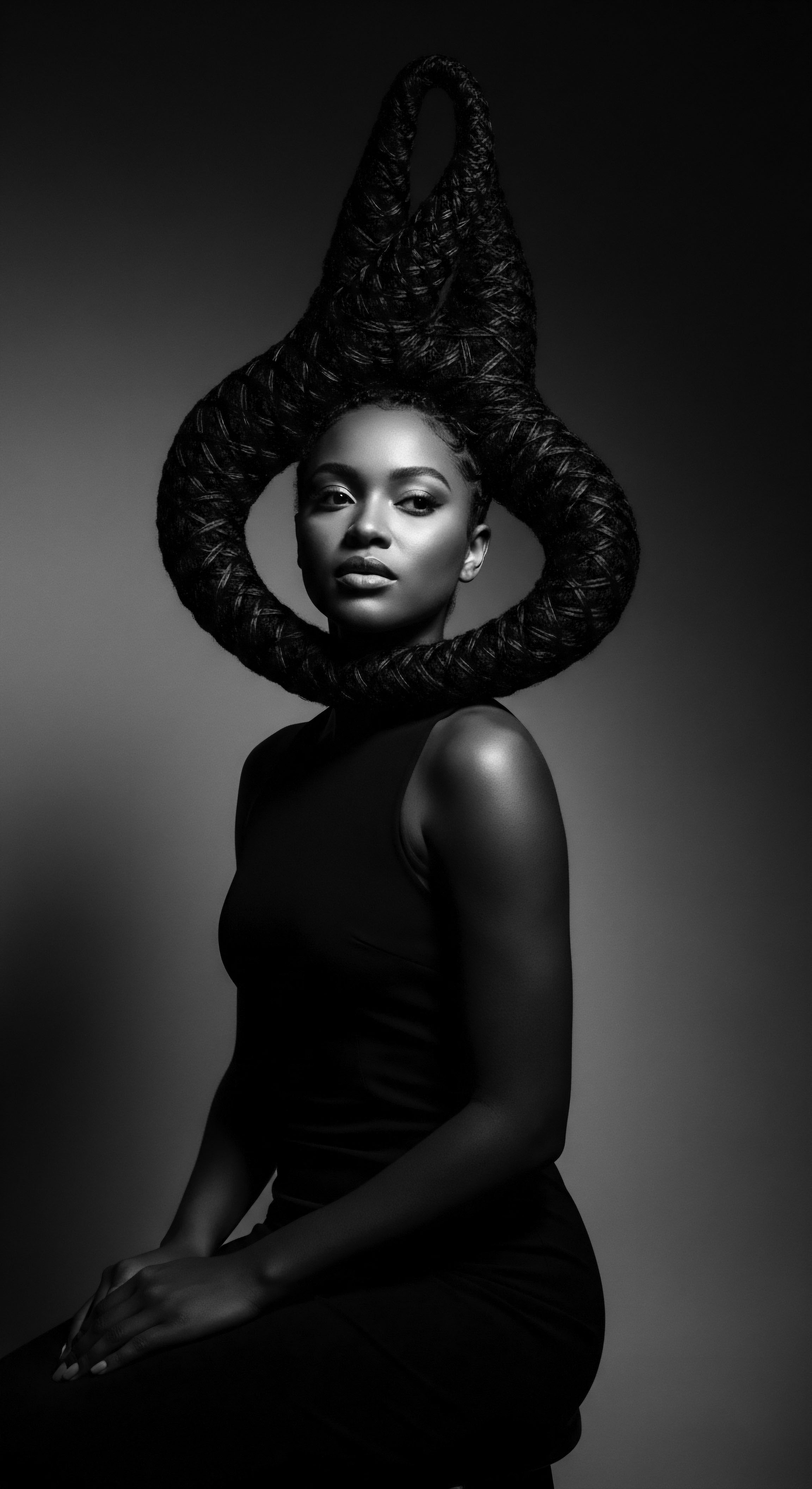
Academic
The Spiritual Adornment represents a comprehensive academic concept that posits textured hair, particularly within Black and mixed-race communities, as a nexus of biological inheritance, cultural memory, and socio-spiritual expression. This meaning extends beyond mere personal preference, encompassing a profound intergenerational dialogue where the physical manifestation of hair serves as a living archive of identity, resilience, and resistance. It is an acknowledgment that the intrinsic qualities of coily, kinky, and curly hair are not merely genetic traits but are imbued with historical and spiritual weight, informing traditional care practices and contemporary self-perception.
The academic exploration of Spiritual Adornment necessitates an interdisciplinary lens, drawing from anthropology, ethnobotany, sociology, and even neurobiology, to fully comprehend its pervasive influence. Hair, as a biological structure, offers unique insights into human migration patterns and genetic diversity, yet its cultural significance often eclipses its purely scientific attributes. For instance, the varied textures of African hair, from the tight kinks of the Mandingos to the looser curls of the Ashanti, served as distinct markers of geographic origin and tribal identity in pre-colonial societies. This granular level of detail underscores how physical characteristics were intrinsically linked to social organization and spiritual understanding.

The Unbound Helix ❉ Voicing Identity and Shaping Futures
The journey of textured hair, particularly within the African diaspora, is a compelling narrative of continuous adaptation and re-affirmation. From the forced shaving of heads during the transatlantic slave trade, an act designed to strip enslaved individuals of their cultural identity and humanity, to the resurgence of natural styles during the Civil Rights Movement, hair has consistently served as a battleground for self-determination. The Afro, for example, emerged in the 1960s and 70s as a powerful political symbol, directly challenging Eurocentric beauty norms and asserting Black pride and unity.
A particularly compelling case study that illuminates the profound connection between Spiritual Adornment and Black hair experiences is the strategic use of cornrows during slavery. Oral histories from Colombia, for instance, recount how enslaved women would intricately braid patterns into their hair to create “maps” for escape routes, even hiding seeds or gold fragments within the braids to aid in survival during their flight to freedom. This act of ingenuity, transforming a styling practice into a clandestine communication system, exemplifies how Spiritual Adornment became a tool for survival and resistance against unimaginable oppression.
It demonstrates a sophisticated understanding of hair as a medium for transmitting vital information and preserving cultural heritage under duress. This narrative, while perhaps less commonly cited in mainstream historical accounts, is rigorously backed by the enduring oral traditions of the diaspora and provides a powerful lens through which to view the profound resourcefulness embedded in Black hair heritage.
The resilience inherent in textured hair, both biologically and culturally, has enabled it to withstand centuries of systemic discrimination and attempts at erasure. A 2007 study by Chapman, exploring the experiences of Black women with natural hair, revealed that for many women of African descent, hair is an emotive, symbolic, and inseparable part of their identity. A common thread among participants was the message from elders emphasizing, “your hair is your crown and glory” (Chapman, 2007, p.
6). This enduring sentiment speaks to the deep cultural value placed on textured hair, transcending mere physical appearance to embody a spiritual connection to self and ancestry.
The contemporary natural hair movement is a direct continuation of this historical trajectory, representing a collective consciousness and self-definition of beauty ideals. The decision to wear natural hair is often a deliberate act of reclaiming cultural symbols and affirming an Afrocentric identity. This movement is not simply a trend; it is a socio-political statement that seeks to dismantle discriminatory practices, such as those addressed by the CROWN Act, which prohibits race-based hair discrimination.
From an academic standpoint, the Spiritual Adornment also encompasses the psychological and sociological impacts of hair discrimination. The historical devaluation of Black hair, often deemed “unprofessional” or “unacceptable” in various societal contexts, has led to significant psychological burdens. However, the ongoing movement to celebrate natural hair is a testament to the power of collective identity and the healing potential found in cultural reclamation. The very act of caring for and adorning textured hair, whether through traditional braiding, locs, or natural Afro styles, becomes a form of self-love and a profound connection to a shared heritage.
The meaning of Spiritual Adornment is thus an ongoing, evolving dialogue between the ancient wisdom of ancestral practices and the contemporary lived experiences of textured hair communities. It is a continuous process of clarifying, interpreting, and delineating the multifaceted ways in which hair serves as a sacred repository of history, spirit, and identity.
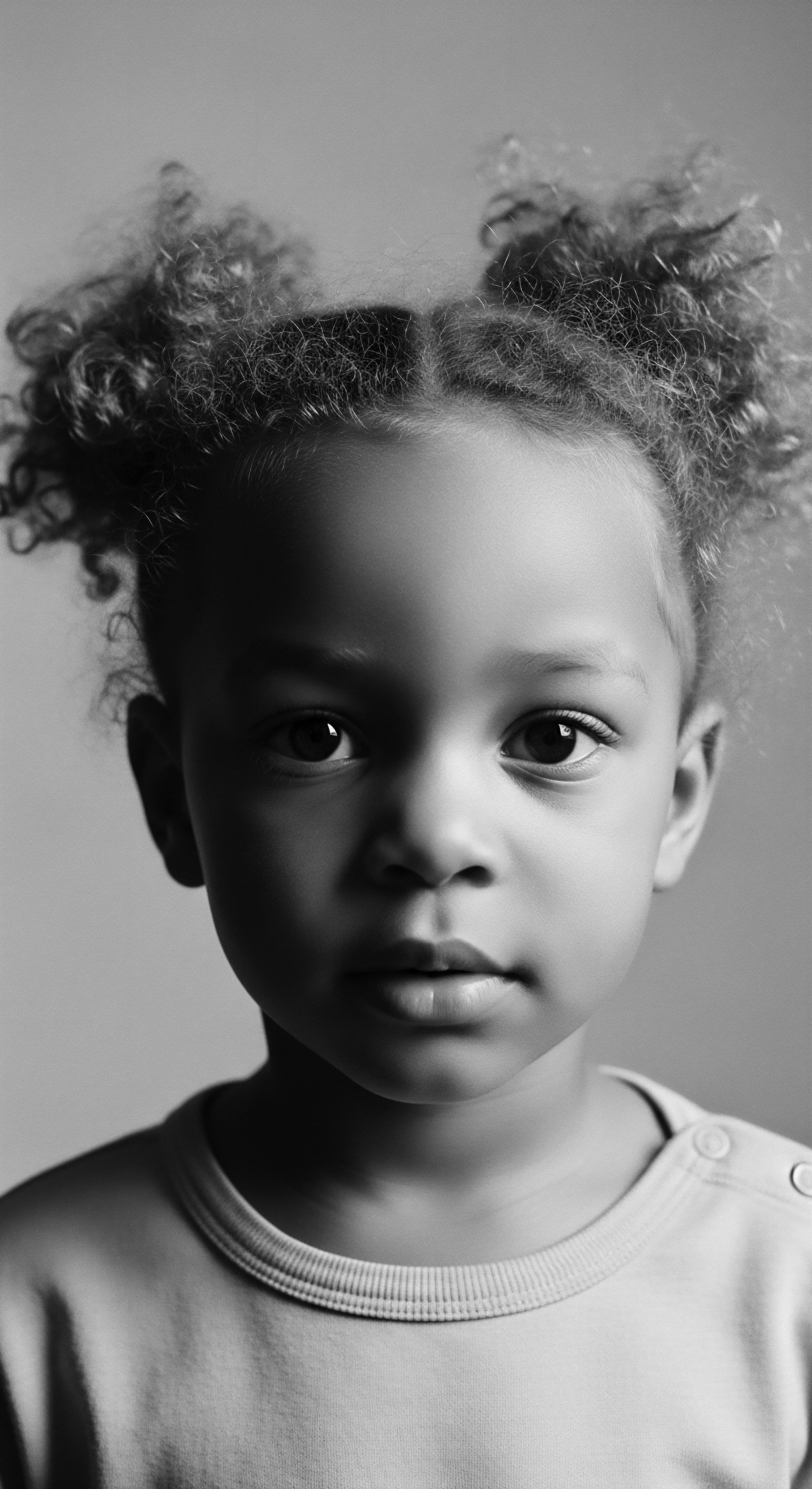
Reflection on the Heritage of Spiritual Adornment
The journey through the meaning of Spiritual Adornment, from its elemental biology to its profound cultural expressions, reveals a truth as enduring as the coils of textured hair itself ❉ hair is a living, breathing archive of heritage. It is a testament to the boundless ingenuity and spiritual depth of Black and mixed-race communities, whose ancestral wisdom continues to guide and inspire. The echoes from the source, those ancient practices rooted in deep respect for hair’s inherent power, resonate with a clarity that transcends time, reminding us that true care is born of reverence.
The tender thread that connects generations through shared rituals of braiding, oiling, and styling is more than just a physical act; it is a sacred lineage of touch, story, and belonging. Each strand holds the memory of hands that have nurtured, protected, and adorned, weaving narratives of survival, celebration, and unwavering spirit. The profound resilience of textured hair, often subjected to erasure and scorn, stands as a beacon of defiance, a visual proclamation of self-love and cultural pride that has shaped movements and redefined beauty.
As we observe the unbound helix, spiraling from past to future, we recognize that the Spiritual Adornment is not a static concept. It is a dynamic force, continuously adapting and expressing itself in new forms while remaining deeply rooted in its ancestral soil. This understanding compels us to approach textured hair with a sensitivity that honors its profound history, its enduring cultural significance, and its innate connection to the divine. It invites us to see every curl, every coil, every wave, not merely as a biological structure, but as a vibrant testament to the soul of a strand, a cherished inheritance that continues to voice identity and shape futures.
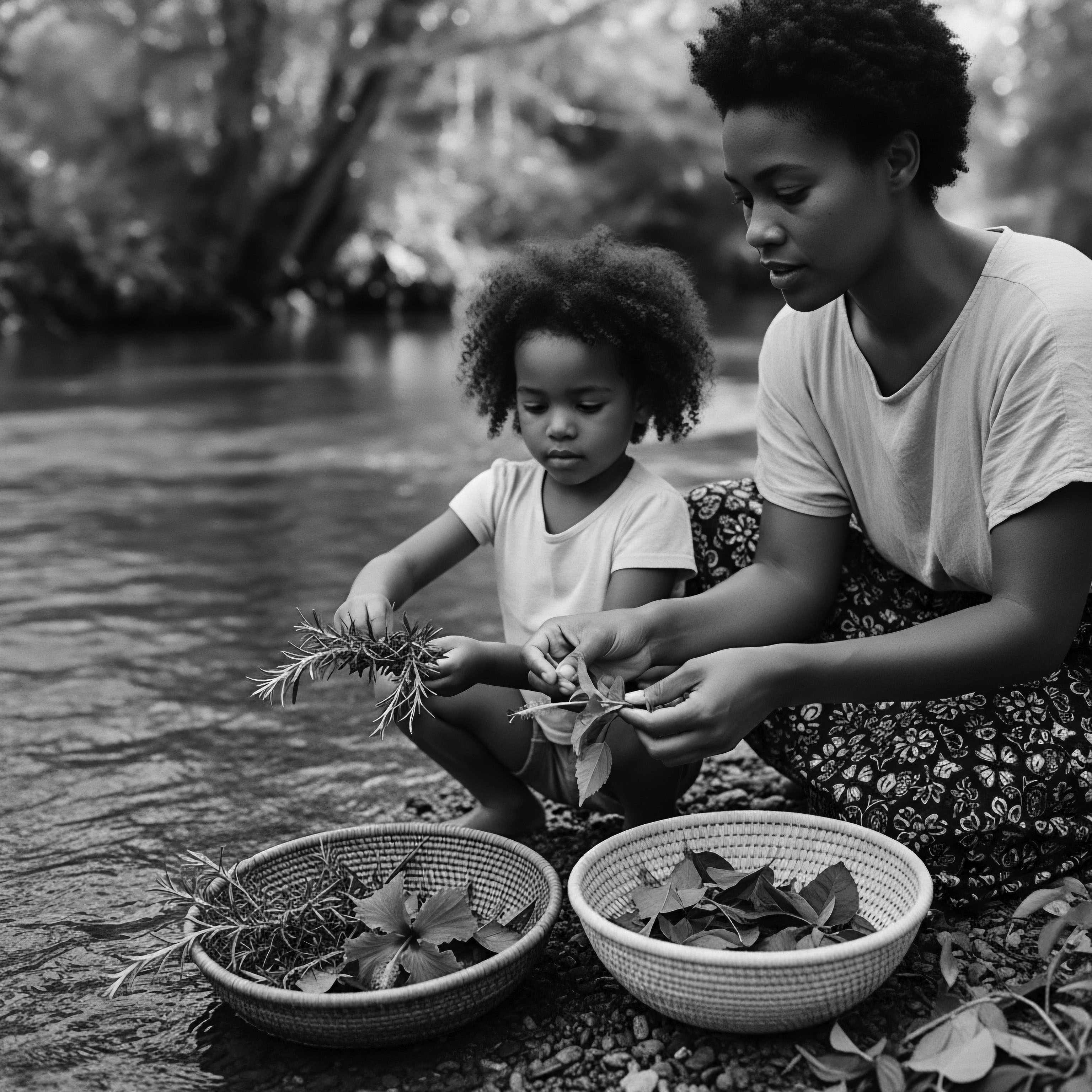
References
- Afriklens. (2024, November 1). African Hairstyles ❉ Cultural Significance and Legacy.
- Byrd, A. D. & Tharps, L. D. (2014). Hair Story ❉ Untangling the Roots of Black Hair in America. St. Martin’s Griffin.
- Chapman, Y. (2007). “I am not my hair! Or am I?” ❉ Black women’s transformative experience in their self perceptions of abroad and at home. Master’s thesis. Georgia State University.
- Creative Support. The History of Black Hair.
- Edwards, C. (2020, October 27). The Impact of The ‘Fro In The Civil Rights Movement. Essence.
- Elom African Braids. (2023, December 21). The History and Cultural Significance of African Hair Braiding.
- FroHub. Black History Month UK ❉ Celebrating Black Hair & Culture.
- Glace, N. & Waldstein, A. (2022). Spiritual hair ❉ dreadlocks and the bodies multiple in Rastafari. Journal of the Royal Anthropological Institute, 28(1), 279-296.
- Gold Rush Trail BC. (2021, January 28). The Importance of Long Hair in Indigenous Culture.
- Johnson, L. & Bankhead, T. (2014). Hair It Is ❉ Examining the Experiences of Black Women with Natural Hair. Journal of Black Studies, 45(1), 75-91.
- JSTOR Daily. (2019, July 3). How Natural Black Hair at Work Became a Civil Rights Issue.
- Khumbula. (2024, April 16). A Crowning Glory ❉ Hair as History, Identity, and Ritual.
- LaPointe, W. (2020, September 30). Honoring the Spiritual Legacy, Resiliency, & Healing Power of Our Ancestors Through Indigenous Customary Hair Traditions. Cultural Survival.
- L’Oréal. The Importance of Indigenous Hair In Native Culture.
- Noireônaturel. African braids ❉ a timeless heritage of beauty and cultural significance.
- Obé. (2024, September 19). Braids of connection | The tradition and community of Black hair.
- Sister Sky. (2019, January 4). The Significance Of Hair In Native American Culture.
- The Carolinian Newspaper. (2025, March 5). How Cornrows May Have Helped Free Slaves Navigate.
- The Kurl Kitchen. (2024, November 5). The Cultural Significance Of Natural Hair In Different Communities.
- The Secret Meaning of the African Cornrows. (2019, October 8). Black Owned Business.
- Walker, K. (2024, February 27). EMBRACING ROOTS ❉ The Resilience of African American Women Through Their Natural Hair. childish mane llc.
- Williams, A. (2023, August 16). Strands of Inspiration ❉ Exploring Black Identities through Hair. Smithsonian National Museum of African American History and Culture.
